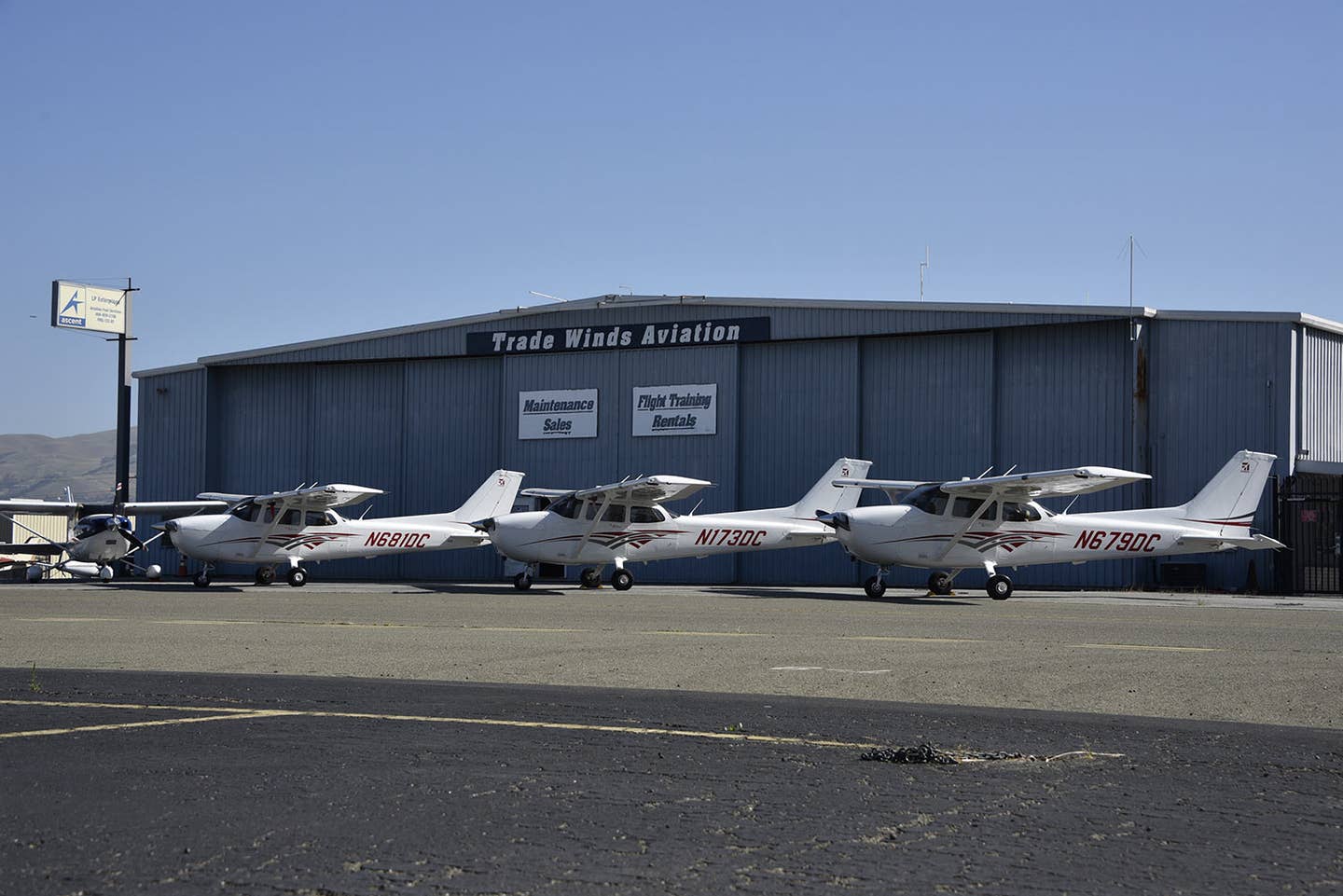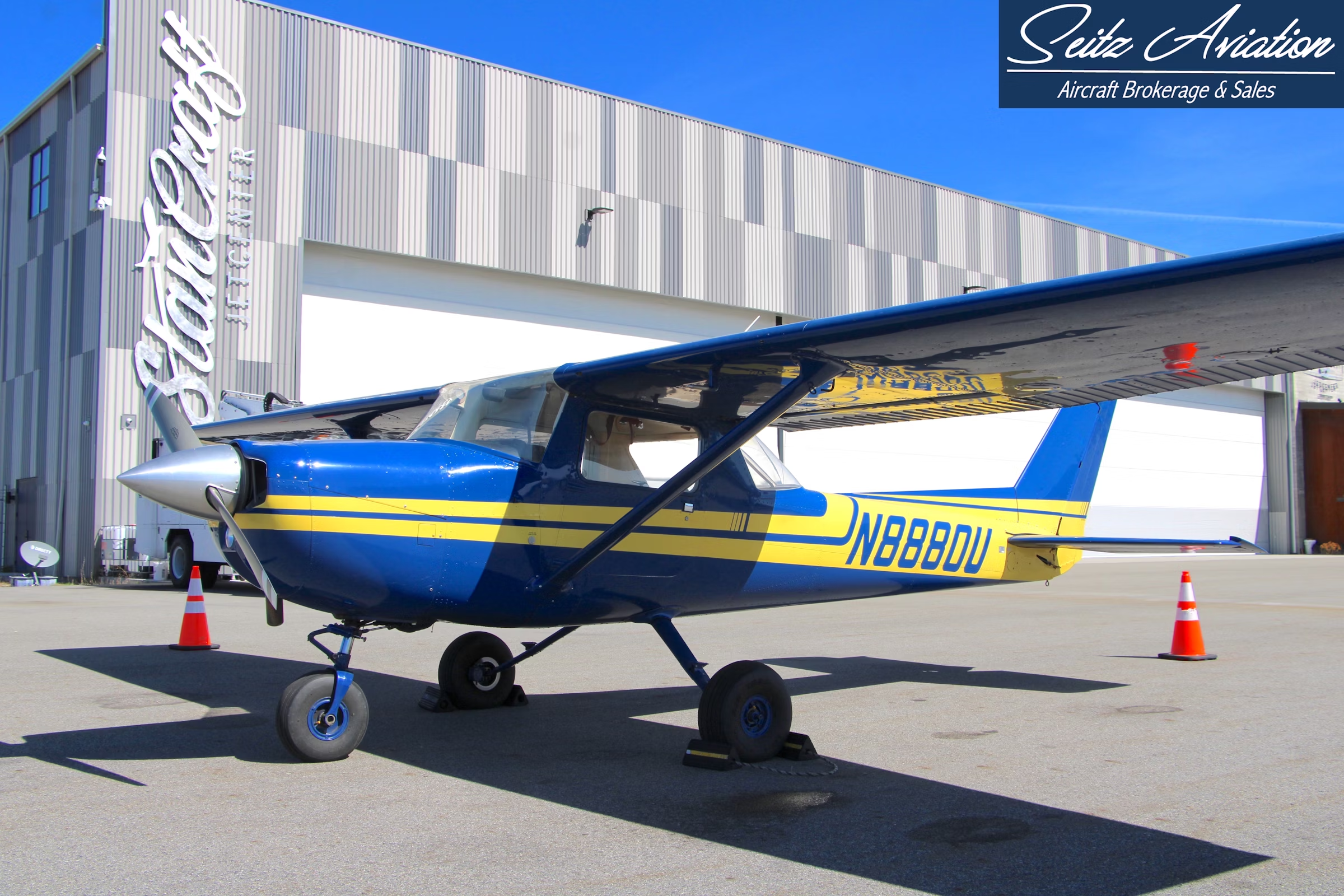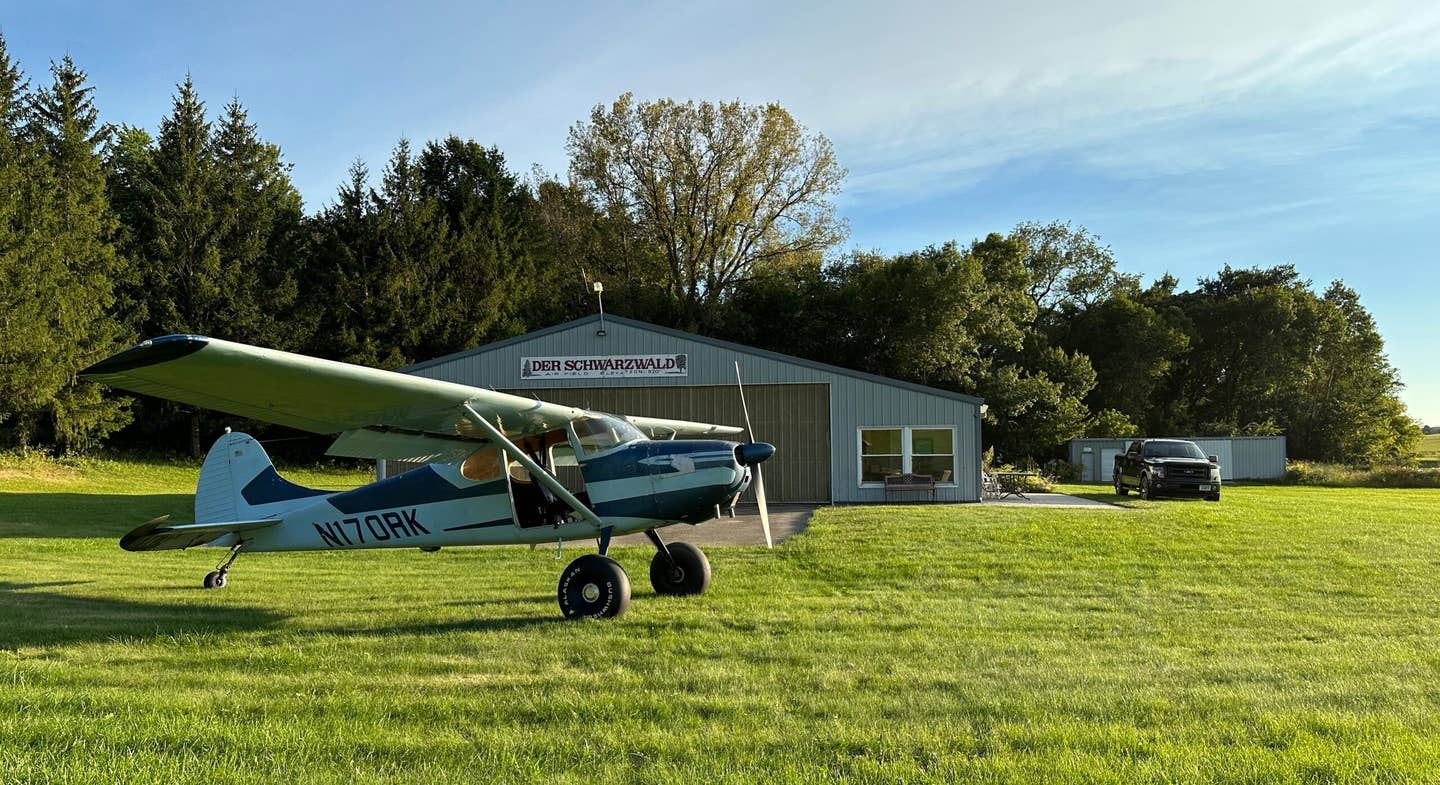FAA: California Airport Violating Grant Assurances
Removal of 100LL cited in violation.

Trade Winds Aviation, a growing flight training organization at Reid-Hillview, has taken a proactive stance towards being a good neighbor to the surrounding community. [Courtesy: Trade Winds Aviation]
A lawsuit filed by the Aircraft Owners and Pilots Association (AOPA) on behalf of flight schools and pilots at two airports in Santa Clara County, Calif., over the ban on 100 low lead (100LL) fuel has come to a close, with the Federal Aviation Administration determining that the ban put the county in violation of grant assurances.
According to the FAA: "The FAA issued a formal determination that Santa Clara County improperly banned the sale and use of leaded aviation fuel at its two of its airports – Reid-Hillview and San Martin," the agency stated to FLYING.
"The FAA director’s determination found that the county violated obligations, known as grant assurances, by banning the sale and use of leaded fuel at the airports. The grant assurances prohibit discriminating against any type of airport user or granting exclusive rights to anyone providing aeronautical services. Airports agree to observe grant assurances when they accept FAA funding."
What are Grant Assurances?
When airport sponsors or owners accept funds from the FAA for airport improvements, such as runway overhauls or lighting improvements, the sponsor or owners must agree to certain obligations or grant assurances, such as the airport will remain open for a specific number of years until the grant has amortized.
The duration of the obligation is usually 20 years or more, depending on the stipulations of the particular grant.
According to the FAA document, since 1983, the county has received $6.8 million in federal airport development assistance, much of which was used to purchase property that increased the footprint of Reid-Hillview.
In 2018, county supervisors voted to stop accepting federal grants for the airport. Supporters of the airport saw this as the first step in a plan to close the facility, as there are government officials who have spoken openly about this, citing concerns about safety, noise, and pollution.
The present grant assurances are scheduled to sunset in 2031, which could open the door for the county to close the airport and redevelop the property.
The Timeline
In late 2021, the county voted to implement a ban on the sale of leaded fuel at both county-sponsored airports in response to a county-funded study claiming "a clear causal link between general aviation operations using leaded avgas at RHV and environmental and human health impacts in the vicinity of the airport."
In October 2022, AOPA filed the complaint on behalf of local flight schools and "at least 847 pilots and aircraft owners based out of the RHV and E16 airports who are unable to access 100LL for retail purchase or to self-fuel with 100LL at these airports."
The complaint alleges the county's ban on the sale and storage of leaded fuel at the airports is in violation of grant assurances.
About the Santa Clara County Airports
Santa Clara County sponsors both Reid-Hillview and San Martin. Reid-Hillview is a towered facility in San Jose, and San Martin is a non-towered airport 18 miles to the southeast in Morgan Hill.
Per the complaint, "KRHV has approximately 330 based aircraft and averages 573 operations per day," and "E16 has approximately 34 based aircraft and averages 91 operations per day."
KRHV has two parallel runways—13R/31L and 13L/31R—and is surrounded by densely packed homes and light industrial development.
On the airport's information page on Airnav.com, there are reminders to pilots that include "100LL unavailable" along with noise abatement procedures including a slight right turn to avoid overflying a school a half mile off the departure end of the runway, no touch and goes between 9 p.m. and 7 a.m., no pure jet or surplus military aircraft except those meeting FAR 36 noise criteria, no turns below 500 feet when leaving the pattern except runway 31R departures and no simulated emergencies in the airport traffic area.
Pilots are also warned about birds in the vicinity of the airport and not to mistake the street lights in the neighborhood northeast of the airport for runway lights. There are two flight schools at the airport: AeroDynamic Aviation and Trade Winds Aviation. Both have been around for decades and have trained thousands of pilots. Trade Winds is a Part 141 school and also has an operation at San Martin.
The county ban went into effect on Jan. 1, 2022, and the county transitioned the county-owned fuel tanks at Reid-Hillview and San Martin Airport—five in all—"to the exclusive sale of unleaded avgas (UL94 and GAMI G100UL) and terminated FBO fuel storage/sale/distribution permits and reissued new self-fueling permits," the complaint states.
According to Eric Peterson, cirector county airports, there was no need to install different fuel tanks to accept the unleaded fuel -- it was just a matter of using up the 100LL in the tanks, then refilling the tanks with either UL94 and G100UL.
Peterson added that aircraft engines do not require any physical modification to accept unleaded fuel, although the aircraft didn't require a Supplemental Type Certificate and corresponding placard denoting that the aircraft was utilizing unleaded fuel. The STC for each aircraft cost $100, and the unleaded fuel providers helped aircraft owners to get the placards.
The complaint was filed on behalf of Trade Winds Aviation, Aperture Aviation Inc., Glynn Falcon, Robert A. Gingell, Christopher Luvara, Michael Luvara, Paul Marshall, and Dr. Joseph C. McMurray, "as persons directly and substantially affected by the alleged noncompliance by the county."
In the complaint, AOPA alleges that the county violated grant assurances "by denying reasonable access to RHV and E16 by unreasonably prohibiting the sale and use of 100LL fuel and denying aircraft owners the right to self-fuel their aircraft with leaded fuel at the county airports.”
The complaint continues: "The county denies it has violated any federal grant obligations" and in December of 2022 filed a motion to dismiss and motion for summary judgment. The county also admitted to transitioning all five county-owned fuel tanks at RHV and E16 to the exclusive sale of unleaded avgas and terminating FBO fuel storage/sale/distribution permits and reissued new self-fueling permits.”
The 27-page ruling was signed by Michael Helvey, FAA director of the office of airport compliance and management analysis. The document states the county has 30 days to provide a "corrective action plan" outlining how it will reverse the ban on leaded fuel and remove the restriction on its purchase and storage, and allow self-fueling with 100LL by commercial service providers.
The ruling suggests the county's action created rules favoring aircraft that can safely use unleaded fuel over those that cannot.

Sign-up for newsletters & special offers!
Get the latest FLYING stories & special offers delivered directly to your inbox






